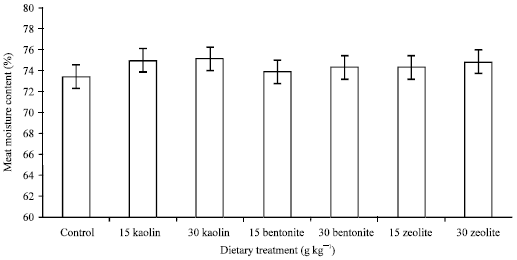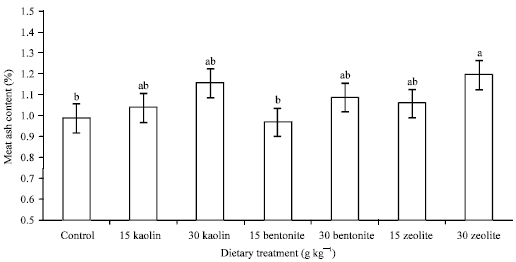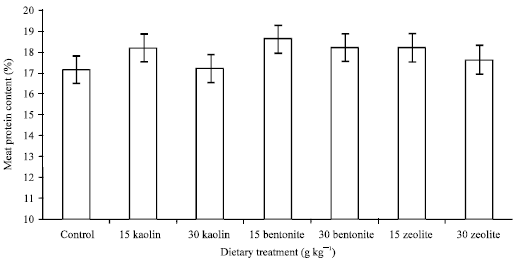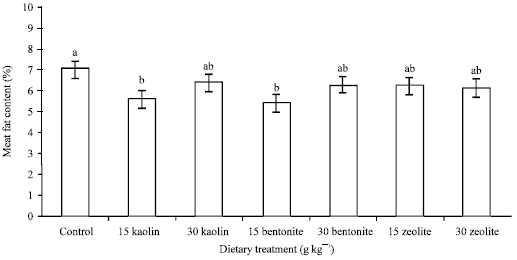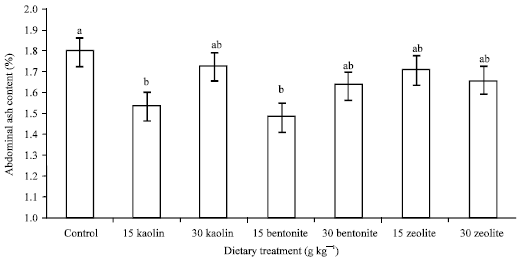Research Article
Effects of Inclusion Kaolin, Bentonite and Zeolite in Dietary on Chemical Composition of Broiler Chickens Meat
Department of Nutrition and Dietetics, Faculty of Medicine and Health Sciences, University of Putra Malaysia, 43400, Serdang, Selangor, Malaysia
F. Boldaji
Faculty of Animal Science, Gorgan University of Agricultural Sciences and Natural Resources, Gorgan, Iran
B. Dastar
Faculty of Animal Science, Gorgan University of Agricultural Sciences and Natural Resources, Gorgan, Iran
S. Hassani
Faculty of Animal Science, Gorgan University of Agricultural Sciences and Natural Resources, Gorgan, Iran
M.S.A. Mutalib
Department of Nutrition and Dietetics, Faculty of Medicine and Health Sciences, University of Putra Malaysia, 43400, Serdang, Selangor, Malaysia
R. Rezaei
Department of Pathology, Immunology Unit, Faculty of Medicine and Health Sciences, University Putra Malaysia, 43400, Serdang, Selangor, Malaysia









